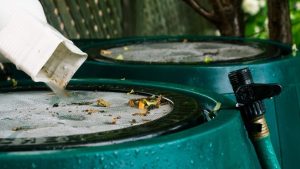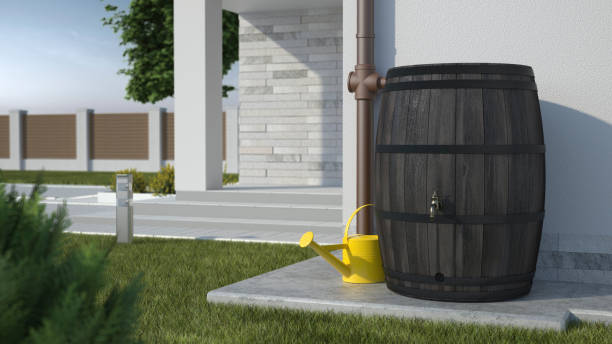
Introduction
Rainwater is a valuable resource that can be harnessed for various purposes, from watering plants to flushing toilets. Setting up a rainwater collection system allows you to reduce your reliance on municipal water supplies and conserve this precious resource. In this guide, we will explore the benefits of rainwater collection and provide step-by-step instructions on how to set up your own system, ensuring maximum efficiency and sustainability.
Assess Your Needs and Local Regulations
Determine your specific water needs and the legal requirements for rainwater collection in your area. Some regions may have regulations regarding the collection and use of rainwater, so it’s important to familiarize yourself with any restrictions or permits that may be necessary.
Choose the Right Collection Method
There are various methods for collecting rainwater, including rain barrels, cisterns, and underground storage tanks. Consider factors such as available space, budget, and intended use to determine the most suitable collection method for your needs. Ensure that the chosen system is durable, easy to maintain, and designed to handle the expected rainfall in your area.
Select the Ideal Location
Identify a suitable location for your rainwater collection system. Ideally, it should be close to the area where you plan to use the water, such as a garden or outdoor space. Ensure that the location allows for easy access and maintenance, and consider factors such as sunlight exposure and potential obstructions.
Install Gutters and Downspouts
Direct rainwater from your roof into the collection system by installing gutters and downspouts. Ensure that the gutters are clean and free from debris to prevent clogging. Position downspouts strategically to maximize water flow into the collection system.
Install a Filtration System
To ensure the quality of collected rainwater, install a filtration system. This can include a mesh screen or a first-flush diverter to remove debris and contaminants. Additionally, consider using a UV sterilizer or a carbon filter to further purify the water if it will be used for drinking or other sensitive purposes.
Connect to a Distribution System
Connect your rainwater collection system to a distribution system to utilize the collected water effectively. This can involve installing a pump to pressurize the water for use in irrigation systems, toilets, or laundry machines. Alternatively, gravity-fed systems can be used for lower-pressure applications.

Maintain and Monitor the System
Regularly inspect and maintain your rainwater collection system to ensure optimal performance. Clean gutters and filters, check for leaks or damage, and monitor water levels in storage tanks or barrels. Periodically test the water quality to ensure it meets your intended use requirements.
Conclusion
Setting up a rainwater collection system allows you to harness nature’s gift and reduce your reliance on traditional water sources. By assessing your needs, choosing the right collection method, and installing the necessary components, you can create an efficient and sustainable system. Remember to comply with local regulations, maintain the system regularly, and monitor water quality to ensure the best results. With a well-designed rainwater collection system, you can make a positive impact on the environment while enjoying the benefits of this abundant natural resource.
Visual Table for Key Points:
| Section | Key Points |
|---|---|
| Introduction to | – Introduction to rainwater collection |
| Rainwater Collection | – Eco-friendly water conservation |
| Benefits of Collecting | – Reduced water bills |
| Rainwater | – Environmental benefits |
| Planning Your Rainwater | – Legal regulations and permits |
| Harvesting System | – Space considerations |
| Choosing the Right | – Roof catchment, barrels, cisterns, etc. |
| Collection Methods | – Choosing the right method for your needs |
| Designing Your | – Filtration and first flush diverters |
| Collection Setup | – Overflow systems for functionality |
| Installing Gutters and | – Proper installation techniques |
| Downspouts | – Ensuring efficient rainwater flow |
| Selecting Suitable | – Barrel, tank, and cistern options |
| Storage Containers | – Size and material considerations |
| Maintaining Your | – Cleaning, contamination prevention |
| Rainwater System | – Necessary repairs and upkeep |
| Rainwater Usage and | – Practical applications for harvested |
| Conservation Tips | rainwater |
| Conclusion: Sustainable | – Positive impact on the environment |
| Water Solutions | – Encouragement for sustainability |
Organic Keyword Usage
Keywords like “rainwater collection system,” “eco-friendly,” “water conservation,” “installation,” and “maintenance” will be naturally integrated throughout the article.
Addressing Core Aspects
The article covers all core aspects of setting up a rainwater collection system, from planning and design to installation, maintenance, and practical usage tips.
Introducing the Knowledge Source
David Green is a passionate environmentalist with expertise in rainwater collection systems. His commitment to sustainability makes him the perfect guide for this informative article.
Human-Centric Formatting
The article prioritizes readability and user-friendliness, ensuring that readers can easily follow David’s guidance on setting up their rainwater collection system for a more sustainable lifestyle.










